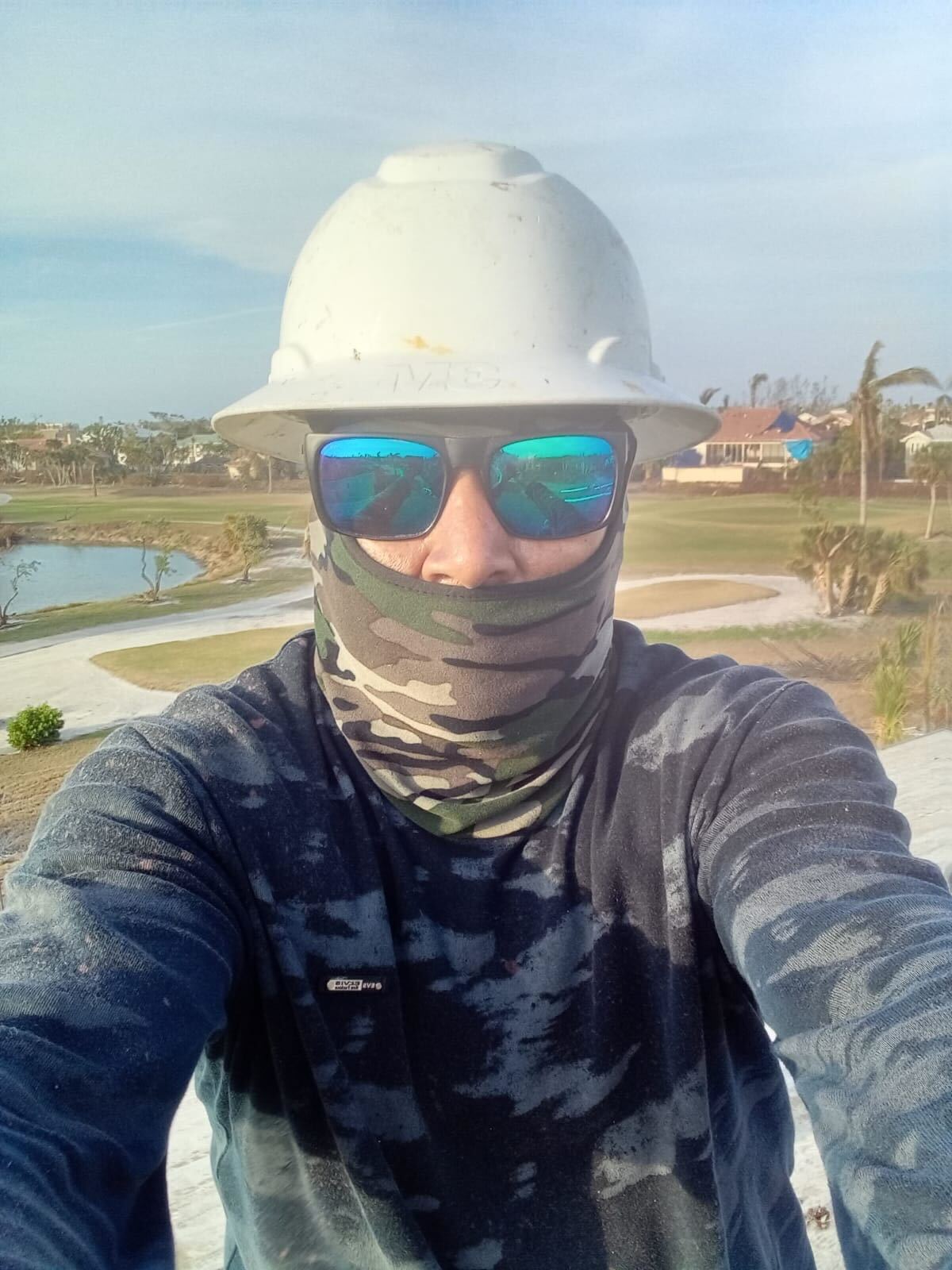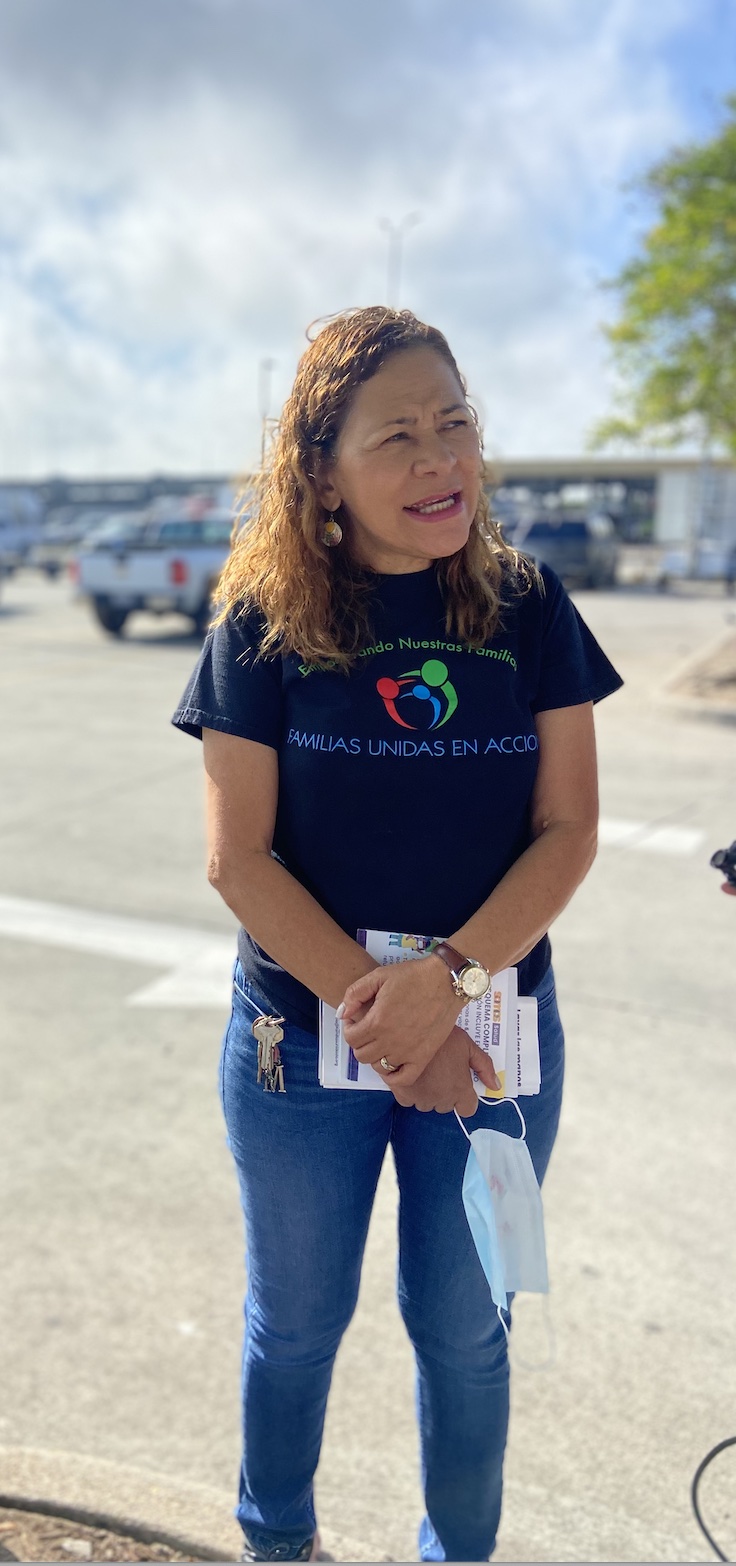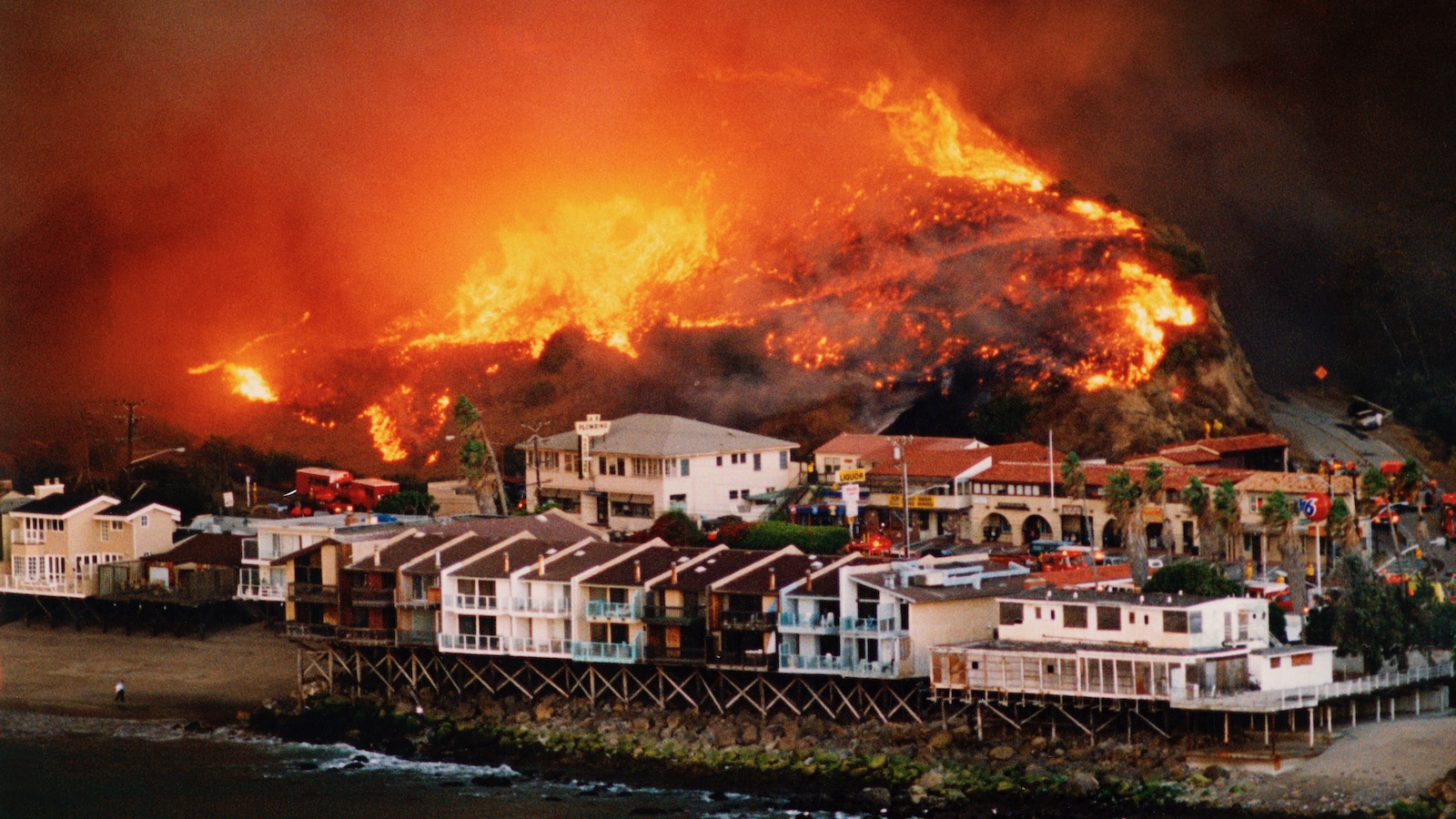A warming planet is creating a booming, and dangerous, disaster-restoration industry
Sep 30, 2023
by Janelle Retka, Samantha McCabe, Jiahui Huang and María Inés Zamudio, Columbia Journalism Investigations and The Center for Public Integrity
This article was produced in partnership with Columbia Journalism Investigations, the Center for Public Integrity and it was co-published by Futuro Investigates, a division of Futuro Media. It is reproduced with permission.
Standing before a two-story house on the coast of Fort Myers Beach, Florida, where Hurricane Ian unleashed a seven-foot storm surge two weeks earlier, Marcos looked at the structure, shredded beyond repair.
Wearing a paper mask and gloves, the 54-year-old Nicaraguan immigrant walked inside. He could see and smell the mold, dark and pungent, blooming in the walls. Marcos spent the day ripping out soggy insulation –– first with hammers and later, his hands. The dust coated his clothes and skin.
Marcos, a construction worker for 25 years, was no stranger to grueling labor. But after Ian devastated a 47-mile swath of Southwest Florida in September 2022, Marcos found himself on a worksite rife with hidden hazards. His eyes swelled, and his skin grew itchy. By day’s end, his breathing had become strained –– an ailment that would linger.
“Everything was falling apart,” Marcos said in Spanish, describing how he had to throw away his clothes every day he worked on the post-Ian cleanup, after spending hours exposed to toxins. (Columbia Journalism Investigations and the Center for Public Integrity are not publishing the full names of immigrant workers interviewed for this story to protect their identities.)
As climate change accelerates natural catastrophes, the disaster-restoration industry has capitalized on low-wage immigrant labor. These workers — who clear debris and build anew after hurricanes, floods and wildfires — perform the most arduous tasks. And this comes at a health cost for those exposed to harmful toxins like mold, asbestos and lead. The U.S. Occupational Safety and Health Administration (OSHA), the federal agency created to protect workers, has ignored research on workplace safeguards against post-disaster toxic exposures. OSHA has enacted an emergency-response policy favoring a fast recovery over worker health.
Left: Disaster restoration worker Marcos takes a selfie at work in Fort Myers, Florida, after Hurricane Ian. (Courtesy of Marcos.) Right: Miriam Romero, community health worker with Familias Unidas en Acción, speaks to disaster restoration workers. Romero handed out free NIOSH-approved masks and leaflets on workplace toxins to day laborers waiting for a job in a Lowe’s parking lot in New Orleans. She also gave workers food, water and COVID-19 tests. (María Inés Zamudio/ Center for Public Integrity)
This booming industry runs on mostly working-age and undocumented migrants from Latin America and the Caribbean who fled poverty, violence and natural disasters in their homelands. Preoccupied with survival, they can fall victim to abuses routinely inflicted upon immigrant workers in the U.S. — wage theft, harassment. But these workers also contend with an overlooked threat: the potentially lethal contaminants propagated by climate-fueled disasters.
Many disaster-restoration workers are exposed to known carcinogens and various toxins, often unwittingly and without protections, which can make them sick, an investigation by CJI and Public Integrity found. Some suffer debilitating health issues long after they’ve left cleanup jobs.
CJI and Public Integrity asked 100 restoration workers primarily based in Florida and Louisiana to share their employment experiences. Nearly all said they tore out drywall and busted up sheetrock following a climate disaster. Most worked at least three events over seven years — from Hurricane Katrina in Louisiana (2005) to Hurricane Harvey in Texas (2017) and Hurricane Ian in Florida (2022) — drawing out their toxic exposures across multiple worksites. Many started this work in the wake of Katrina, the first of what would be 13 billion-dollar tropical cyclones to hit New Orleans in the 18 years since.
More than two-thirds of workers said they were exposed to asbestos, lead and mold on the job; of those, all but two said they experienced health symptoms linked to these toxins, such as skin and eye irritations, respiratory issues and headaches. Some said they’ve developed chronic ailments caused by these pollutants, including lung cancer, asthma and vision loss. Others said they don’t know about the long-term impact on their health because they don’t have access to a doctor.
Linda Birnbaum, who headed the National Institutes of Environmental Health Sciences before retiring in 2019, calls the workers’ responses “depressing.” The number of workers sickened by post-disaster cleanups “is only going to get worse,” she said, “unless there are steps taken to reduce their exposure.”
Under pressure for its post-Katrina response, OSHA researched the toxic threats that can endanger workers and sounded alarm bells in 2006, only to go quiet since. Today, the agency often suspends enforcement of workplace standards following disasters. Inspectors offer guidance — with little accountability — to companies violating regulations that would limit such risks.
Meanwhile, agency officials have tried for 16 years to create disaster-specific rules for worker health and safety — from hazards training to health monitoring. The proposed regulation, focused on those who first respond to a calamity, would overlook this immigrant-heavy industry.
OSHA declined to make Assistant Secretary Douglas Parker available for an interview and instead provided a written statement stressing that “employers have a responsibility to protect workers from deadly hazards such as mold, asbestos and lead,” and that OSHA maintains its right to enforce health and safety standards in the wake of catastrophes. Ultimately, the agency defended its typical approach of suspending enforcement.
“Compliance assistance allows OSHA to intervene at hundreds of worksites involving thousands of workers,” the agency said. “Using the same number of staff on an enforcement footing, OSHA would only reach a small fraction of those workers.”
Months after Hurricane Ian — the third-costliest hurricane on record in the U.S., causing $112 billion in damages — hundreds of immigrant workers, like Marcos, have flocked to day-laborer corners and cleanup sites across Florida’s Lee County. Hired by brokers and contractors, they’ve shoveled debris and dismantled buildings.
These laborers represent an expanding web of companies — from mom-and-pop shops to multinational corporations — profiting off of climate-driven devastation. In the last three years, federal data shows, the warming planet has fueled 20 major hurricanes, floods and wildfires – five fewer than in the entire 1990s.
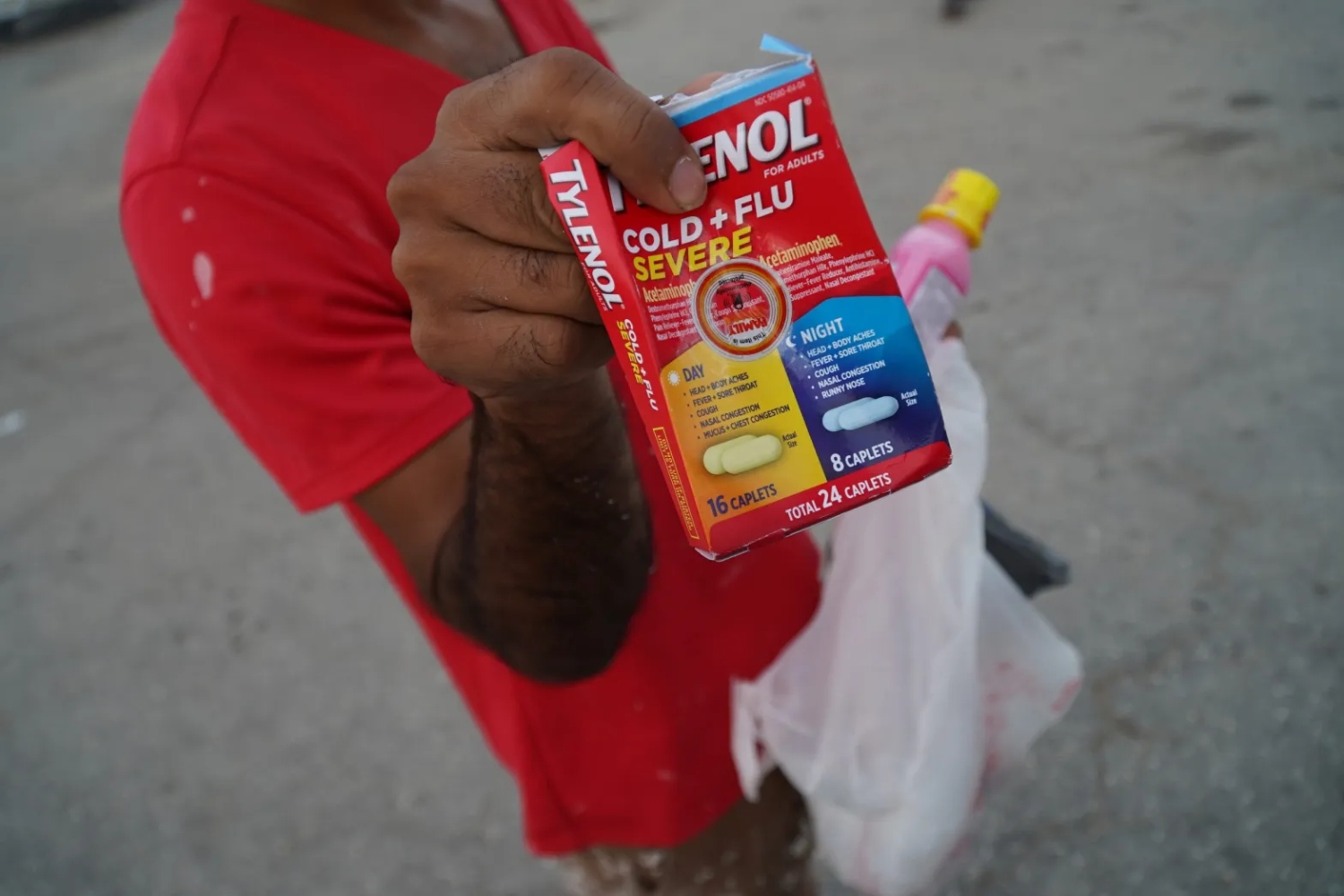
iahui Huang/Columbia Journalism Investigations
But while corporations like Amazon and Starbucks face heightened scrutiny for their labor practices, the disaster-restoration industry has grown into a loosely regulated system that many industry players describe as “the wild west,” largely under the public’s radar. Its workers remain invisible even as the climate crisis makes them essential.
“The system is not designed to protect workers,” said Mario Mendoza, himself a disaster restoration worker since Katrina and founder of the New Orleans-based grassroots group Familias Unidas en Acción. “They [employers, regulators and the American public] care about a beautiful city and they don’t care about the workers – especially people with my skin tone.”
‘No one warned us’
Nothing prepared Santos for the stench — a mixture of mold, rotten food and dead bodies — that lingered throughout New Orleans’ Lower Ninth Ward for months after Katrina. As he cleaned the kitchen of a now-demolished elementary school, the odor permeated his hazmat suit, mask and glasses. It followed him to the dormitory where he slept with hundreds of other workers rebuilding the city. At night, he wondered whether it could seep into his brain.
One week after arriving in the hurricane-battered city from Dallas, Santos found work at the public school, assigned to cut open industrial-sized refrigerators to dispose of decaying food. The 43-year-old laborer took pride in finishing his putrid shifts without vomiting or fainting — unlike some coworkers.
At first, Santos was happy to be earning a $12 hourly wage. It was $5 more per hour than his previous job, and he needed the money to send home to Honduras to support his five children. The fisherman had lost everything after Hurricane Mitch contaminated the river where he fished.
Still, his gratitude turned to dread within months, when his wheezing cough lingered. Soon he needed an inhaler for the first time in his life.
“When a hurricane passes [over], you’re exposed to all that,” said Santos, whose cough often interrupts his speech. “No one warned us about the danger.”
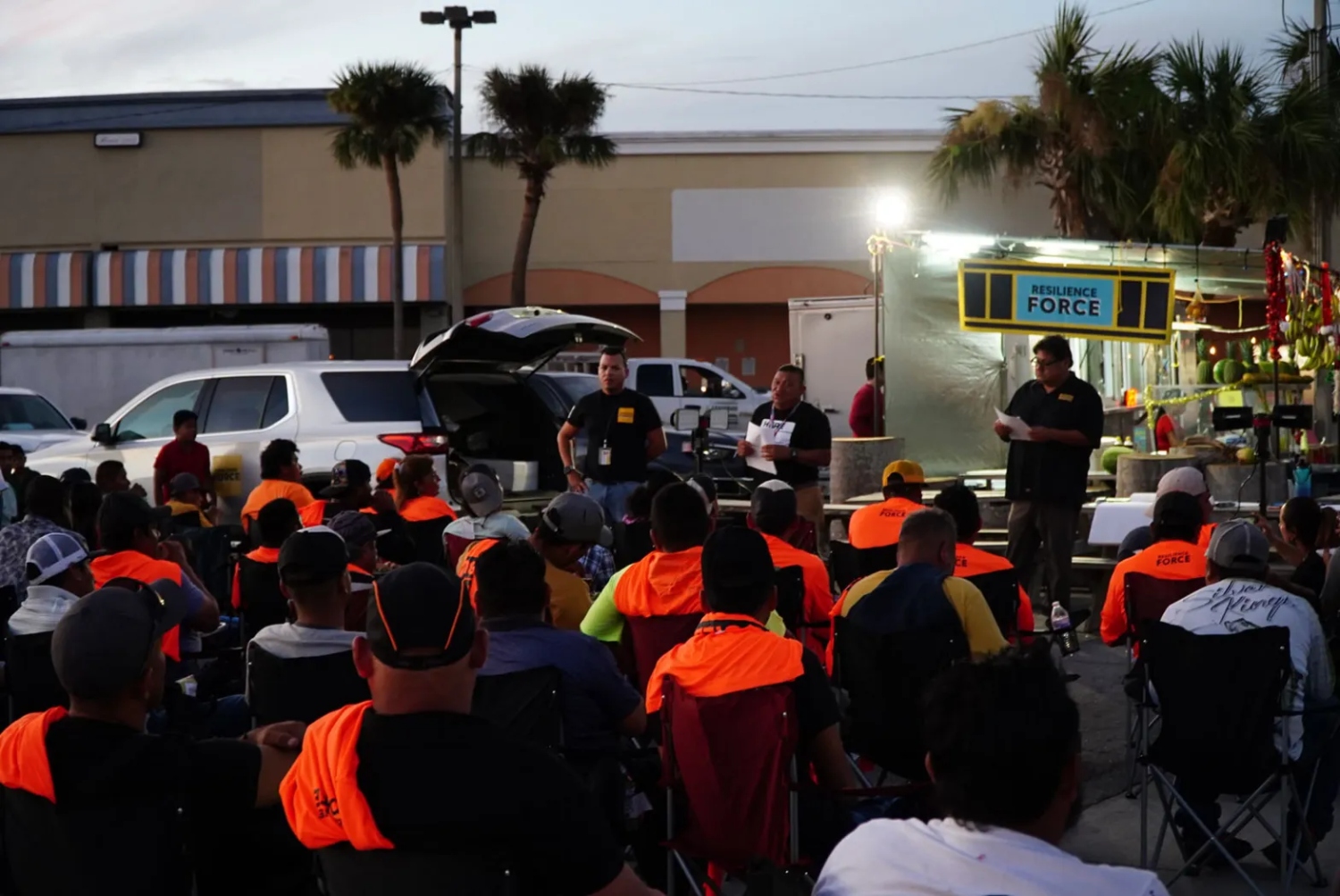
Jiahui Huang/Columbia Journalism Investigations
Thousands of workers like Santos descended on a 70-mile stretch in and around New Orleans, where an estimated 134,000 homes sustained damage. It was ground zero for OSHA, its first and largest response to a climate disaster.
Dean Wingo, OSHA’s deputy incident commander for Katrina in Louisiana and Texas, helped lead that effort. He remembers rolling out the agency’s new emergency-response policy, piloted after the September 11 terrorist attacks: OSHA inspectors would offer guidance to companies that violated health and safety regulations in exchange for immediate fixes, rather than issue citations.
Forty inspectors patrolled the area, searching for worksite hazards. Asbestos and lead have clear mandates that employers must follow to protect workers’ health. For mold, which has no legal standard, inspectors encouraged employers to hand out masks.
Wingo remembers his staff were overwhelmed by the vast and chaotic scene. Inspectors couldn’t keep up with all the companies relying on immigrant labor. As a result, he said, immigrant workers “were exploited quite a bit.”
Six months after Santos started clearing debris — exposing him to what public officials and researchers called a “toxic gumbo” — he noticed other workers getting sick, too. He remembers them queuing up to shower: “I could hear the orchestra,” he said, describing the coughs and wheezes. “It sounded like chickens or roosters.”
Kevin Stephens, then New Orleans’ public health director, had his department help test the air and soil for asbestos and lead, among other toxins. “We found everything everywhere,” said Stephens, who launched a public awareness campaign urging people to wear masks and gloves.
OSHA also tested post-Katrina cleanup sites and, in 2006, published a guidance known as the Hurricane eMatrix, meant to help companies prevent post-disaster hazards. The eMatrix warns that American structures built before the 1980s likely contain asbestos, and flags potential lead exposure from pipes, paint and dust.
Even small doses of asbestos have been shown to cause mesothelioma, a lung cancer. Chronic exposures to lead can cause reproductive issues, kidney problems and seizures, while mold can contribute to pulmonary disease and asthma.
As laborers slogged through the demolition in New Orleans, health risks from such toxic exposures became evident. Researchers found the cleanup was causing workers’ bouts of sinusitis and inflamed lungs, dubbed “Katrina cough.” One survey of 200-plus workers found that half had reported asbestos and mold present on sites. The workers said they suffered from respiratory conditions and headaches, according to Ted Smukler, the lead researcher.
Smulkler later testified about these results at a 2007 congressional hearing on OSHA’s post-Katrina activities. Policymakers and advocates criticized OSHA for failing to protect immigrant workers. The message was clear: By suspending labor enforcement, agency officials had allowed contractors to operate as if they were unregulated, with dire consequences for workers’ health.
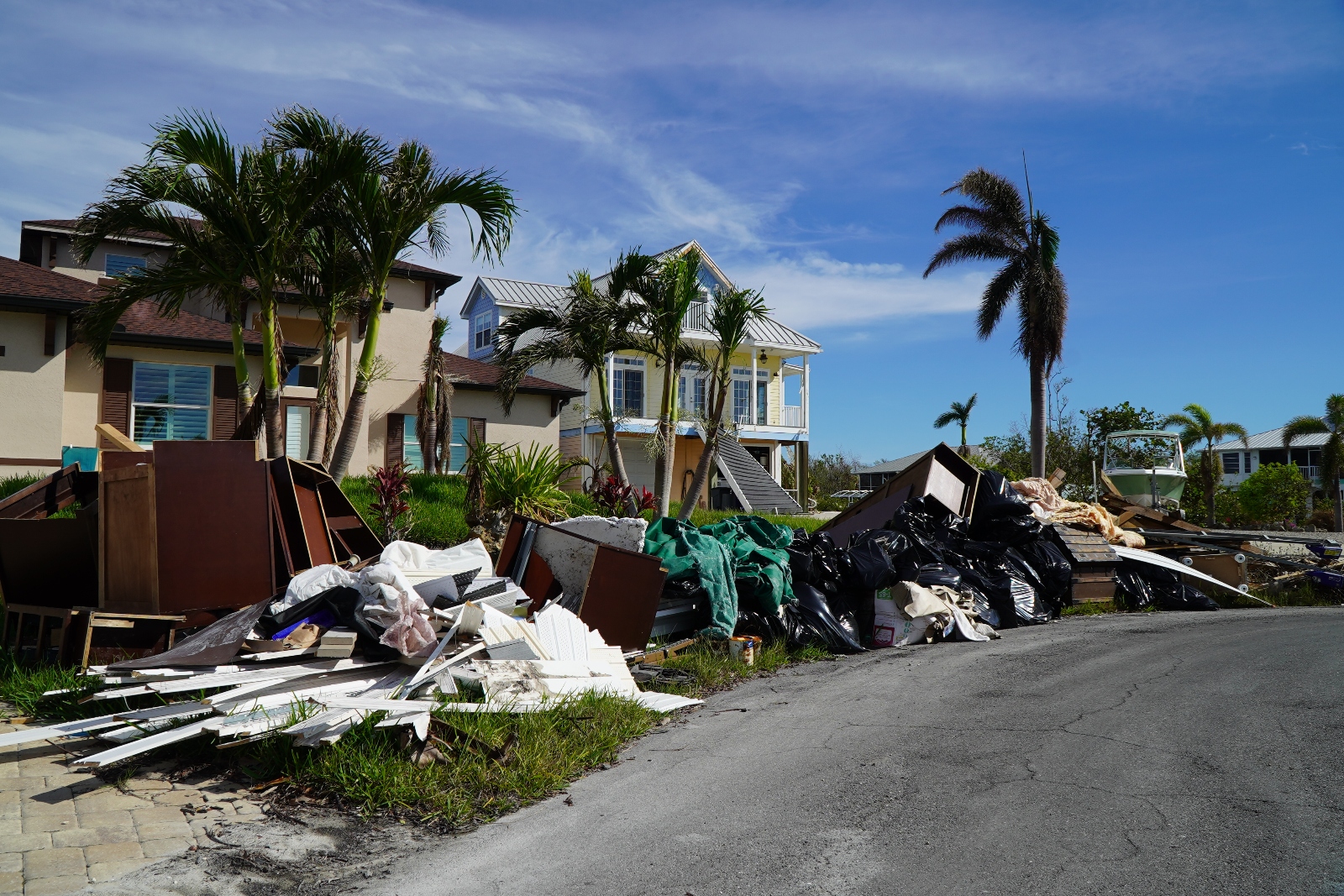
Jiahui Huang/Columbia Journalism Investigations
That year, OSHA began its effort to regulate post-disaster sites. Experts urged the agency to protect the most vulnerable –– the immigrant workers who restore American cities long after the first responders have left. They called for testing of workplace toxins, providing workers training and gear, and monitoring their health.
“The hearing was an early recognition that a massive workforce, mostly composed of immigrants, was at the center of the rebuilding,” said Saket Soni, of the restoration-worker organization, Resilience Force, who testified about labor abuses he’d cataloged on cleanup sites around New Orleans. The hearing left him hopeful that OSHA would create new protections for disaster-restoration workers, he said.
The case for such protections continued to mount. The National Institute for Occupational Safety and Health (NIOSH), part of the U.S. Centers for Disease Control and Prevention, studied the effects of post-disaster hazards on workers in the U.S., and found there were “significant gaps and deficiencies” in workplace safeguards. A 2009 report concluded that the adverse impact on Latino laborers’ health after Katrina was “likely to be duplicated throughout the country” without rigorous regulatory oversight.
By then, Santos was responding to another climate disaster. He cleared debris from 10 hurricanes in Louisiana and Texas over 13 years — including Sandy, Harvey, Laura, Ida and Ian. With every event, he said, his breathing worsened. On every site, he said, he experienced similar conditions.
His family was worried, Santos said, and “would tell me that I couldn’t finish a phrase or a sentence without coughing.”
Unwatched, an industry explodes
As workers like Santos hopscotched around the country cleaning up after climate calamities, the industry has burgeoned. Today, its largest trade group, the Restoration Industry Association, estimates that 15,000 companies comprise the $150 billion sector. Many of these contractors bring in just $3 million annually, the RIA says. That pales in comparison to billion-dollar industry giants like Belfor and Servpro Industries — and suggests that most restoration work occurs on a small scale.
Six industry insiders from mid-sized companies say the explosion of this work — and its increasing stream of public and private dollars — have lured traditional construction contractors who view it as recession-proof. Some companies — dubbed “storm chasers,” “charlatans” and “cowboys” — are ill-prepared to do the job, the insiders say.
Any construction company can get into the disaster-restoration business, which has no special certifications.
While OSHA intended its Hurricane eMatrix to be a tool for companies, its data show that few make use of the information. OSHA estimates the English-only online guide has received thousands of unique page views over a two-year period — including from its own employees. Only one of the 30 companies interviewed for this story said it had heard of the resource.
Agency regulations require construction companies to train employees on how to properly handle lead- and asbestos-laden materials before coming into contact with them. Employers must provide suitable protective gear and monitor worker health.
Resilience Force’s Soni said he often sees contractors boost profits by eliminating worker health and safety measures. While organizing immigrants in the field, he and his team have documented companies skipping safety meetings and requiring their workers to buy their own protective gear.
Most immigrants surveyed by CJI and Public Integrity said their employers didn’t provide protective equipment, and never offered training on toxins.
Tens of thousands of immigrants have been recruited into restoration work by companies just like this, according to Resilience Force. They show up at day-laborer corners and join WhatsApp groups. Some are pulled in by friends and family.
At 35, Joel has become a restoration veteran. Over the past five years, he’s cleared destruction left behind by 18 hurricanes, floods and wildfires in four states. Recruited by friends from his native Venezuela, Joel said he didn’t receive training until his third event. The hour-long session didn’t prepare him for the asbestos, lead and mold that he would encounter, he said. It was the first and last time an employer offered him instruction.
In 2018, when Joel came across a tar-black material mixed in the Hurricane Florence debris, an older laborer identified the poisonous material as asbestos, and warned it could harm his health. In 2021, Joel recognized the black asbestos tiles that his coworkers removed from a house devastated by the Marshall Wildfire, in Colorado.
“I immediately told everyone, ‘Guys, don’t touch that. Everyone get out,’” he said, explaining that no one was trained in asbestos abatement. Joel, who wasn’t wearing protective gear, feared speaking up would be risky. He decided to tell his manager, a Servpro contractor, who threatened to get him deported for disrupting the workflow, he said.
Servpro Industries declined to comment, saying that as a franchisor it “does not provide, contract or subcontract any direct services,” and thus is not responsible.
“We’re kind of disposable,” Joel said. “We’re used to rebuild cities after disasters, but when we’re not needed, we’re simply discarded.”
Failing to learn from the past
Under OSHA’s emergency-response policy, inspectors are supposed to work with employers to address hazards before workers suffer ill effects. That’s faster than the agency citing an employer for violating regulations, officials say, an enforcement action that can take months to resolve.
But that’s assuming an agency inspector can visit the worksite in time to catch infractions. An OSHA spokesperson said the agency typically deploys two dozen inspectors after major hurricanes, less for smaller storms. And only five companies told CJI and Public Integrity that they had interacted with an OSHA inspector on a cleanup site.
An internal agency memo dated September 2014 concedes that this policy of voluntary compliance has staffing issues and other shortcomings, but ultimately defends it. The memo presents enforcement as a prolonged, bureaucratic process that could slow down recovery.
“We’re trying to do the best that we can to ensure that information gets out and that worker safety and health is raised,” said Young Wheeler, who heads OSHA’s emergency-management division.
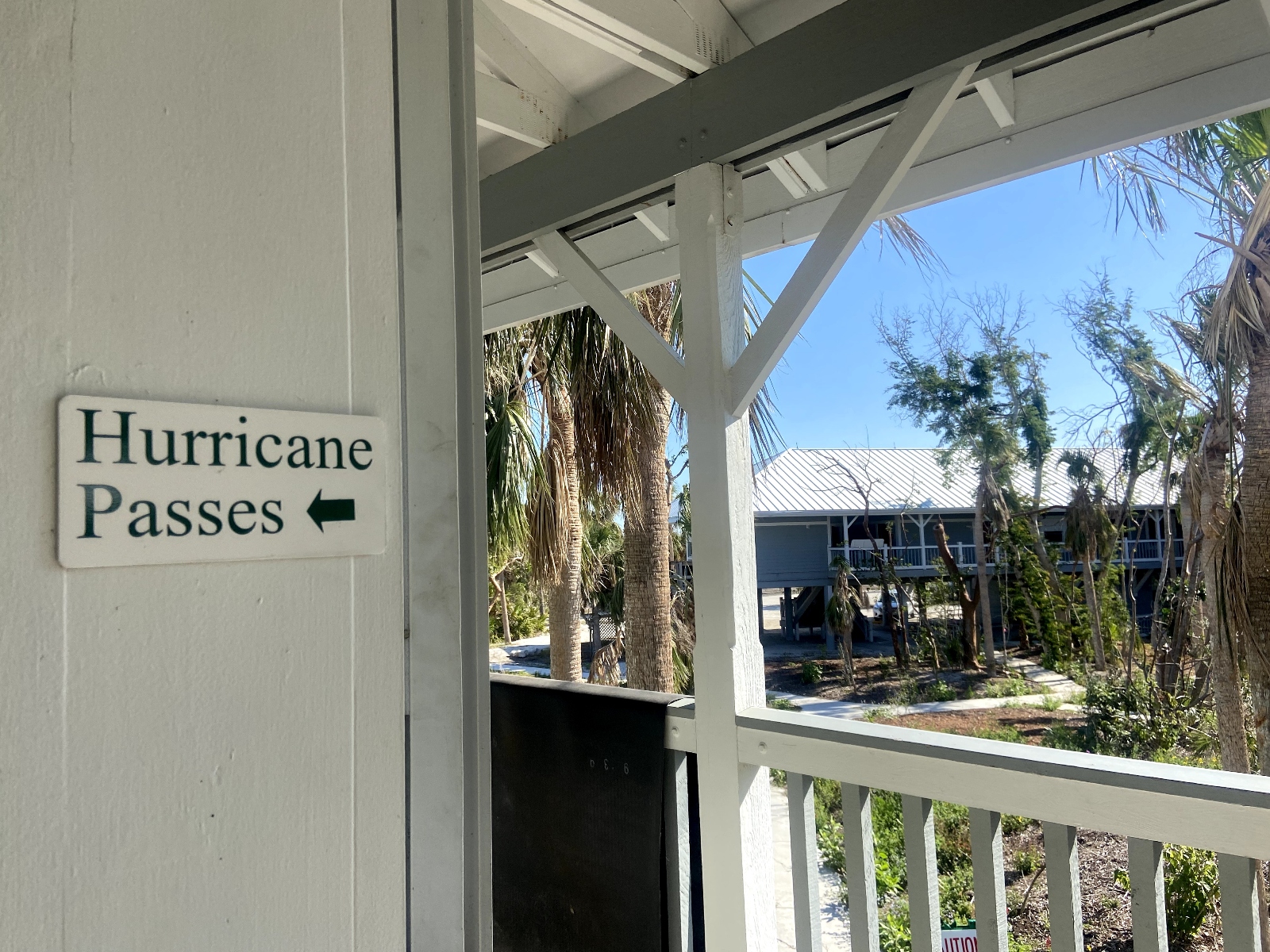
María Inés Zamudio/ Center for Public Integrity
Records obtained by CJI and Public Integrity through a Freedom of Information Act request portray OSHA’s post-disaster activities as superficial at best. During the agency’s Ian response, inspectors often reported spending just 15 minutes at worksites. According to inspection reports, they spoke with workers mostly while driving by, and made note of visible hazards — the lack of roofing harnesses, for instance, or the improper use of ladders.
Inspectors noted that four out of every 100 post-Ian workers had some type of respirator, such as an N95 mask, the records show.
CJI and Public Integrity obtained two internal databases meant to track OSHA’s company interventions during climate disasters. The records are incomplete: The data didn’t include any floods or wildfires; nor did it include at least four major hurricanes during which the agency had carried out its compliance assistance policy. Instead, the data catalogs OSHA interventions following five hurricanes since 2017 — from Harvey to Ida and Ian. The agency’s sporadic record-keeping suggests that workplace issues can go unchecked from one calamity to the next.
In the wake of Hurricane Matthew in 2016, for instance, Thompson Consulting Services, a Florida-based disaster debris monitoring company, came onto OSHA’s radar. Records show a Thompson worker in Lumberton, North Carolina, filed identical complaints with the North Carolina Department of Labor against the company concerning three of its demolition worksites. According to the complaints, Thompson failed to consistently enforce the use of safety equipment it provided to its employees at the worksites. Without steel-toed boots, some workers wore tennis shoes and Ugg boots, according to the complaints. This series of complaints was logged in OSHA’s central information systems database.
OSHA inspectors visited all three worksites, but only found workers on one of them. Two complaints were closed. It’s unclear the status of the third inspection.
Thompson has continued to hire workers to monitor debris on post-disaster cleanup sites. The company has more than a dozen contracts with municipalities in four states, including a $10.4 million deal for monitoring Ian debris in Lee County, records show.
Workers have reported similar concerns about Thompson in Florida.
Michelle, a 48-year-old immigrant from Venezuela, worked for Thompson Consulting in the aftermath of Ian. Hired at a job fair in October 2022, she said she didn’t know much about the company. Ian destroyed her mobile home three weeks earlier — killing her dog, Chico. Thompson offered her $15 an hour to oversee the removal of debris from sunrise until sunset, plus an additional $2 a day for gas. She started almost immediately –– without the minimum two-hour training required for her post, she said, as outlined in the company’s Lee County contract.
For weeks, Michelle watched a truck carrying rubble out of Saint James City, an island off the Southwest Florida Coast, and transporting it to the weighing station. Every night before she slept inside her Toyota Sienna van, she had to scrub off the dust caked on her body.
“My respiratory system felt as if … I was breathing fire,” she said, adding that within two weeks her ears felt so clogged that she temporarily lost her hearing. A Red Cross clinician told her that she had a respiratory infection and needed antibiotics. When she notified her manager at Thompson, she was told to wear a mask, she said, but the company refused to provide her one. She quit soon afterwards.
Thompson Consulting Services did not respond to multiple phone calls and emails seeking comment.
OSHA records show inspectors visited Thompson worksites across Lee County on seven occasions from mid-October to mid-December 2022. On the last visit, an inspector noted that the company’s site supervisor and another employee declined OSHA safety hand-outs. The pair weren’t “receptive of education,” the inspector’s report states.
In its statement, OSHA said it is overhauling its data collection around post-disaster interventions to allow for “more timely, consistent and accurate entry of information.”
Referring to the company, Michelle said, mostly in English, “When I got sick, they don’t care. They don’t show care.”
‘We want to protect each other’
Just before sunrise on a foggy morning in November, six weeks after Hurricane Ian had hit Fort Myers, restoration workers filled a parking lot on the city’s north end, waiting to be hired. Marcos had woken at 4:30 a.m. that day, fought back his symptoms and trekked here to join dozens of immigrants. Many slept in cars or tents behind a dollar store. Most were dressed in baseball caps, long-sleeve shirts, jeans and tennis shoes. Few could afford masks and gloves.
“All of us Hispanics who have worked hard [in this industry], we feel it in our own flesh. We all have suffered,” said Marcos, describing the coughs, hives and reddened eyes he’d experienced after demolishing hurricane-impacted buildings.
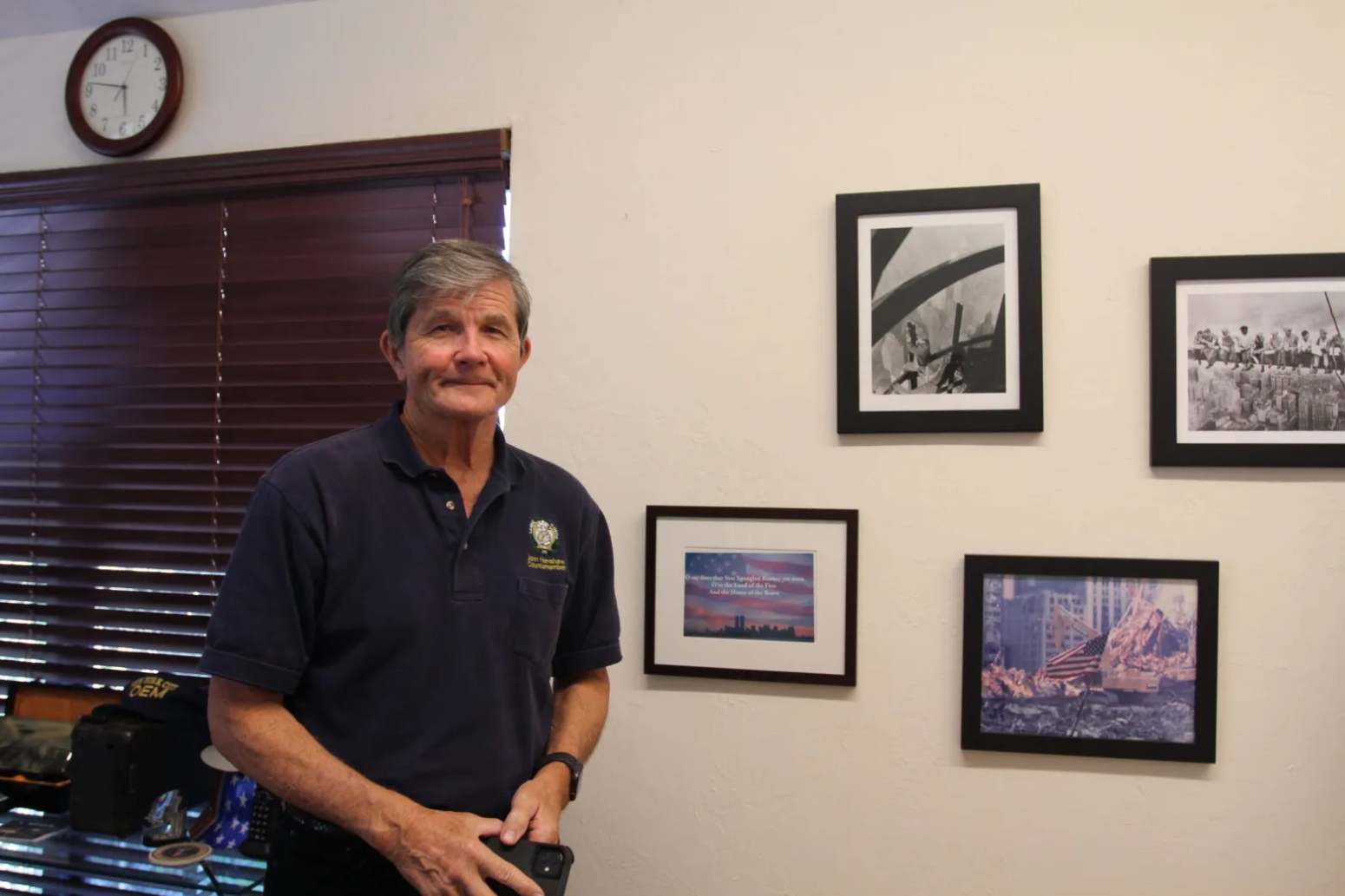
Janelle Retka / Columbia Journalism Investigations
Local parcel data shows that more than a third of the structures damaged by Ian were built before the 1980s, when asbestos and lead were common in building materials.
No government body maintains a system for cataloging companies on the ground in Lee County, post-Ian. But Sanibel Island, an affluent community of 6,800 residents located on a 16-mile stretch of land off the county’s west coast, has tallied up a log: After officials there blocked the road connecting Sanibel to Florida’s mainland during the recovery, they handed out 2,284 “hurricane passes” to construction companies hailing from Florida, Texas, Alabama and beyond. Only 154 companies were local.
That’s a scale the architect of OSHA’s emergency-response policy never envisioned. As OSHA’s assistant secretary during the 9/11 cleanup, John Henshaw, now a Sanibel Island city councilor, agreed to lift the agency’s enforcement activities for the four contractors sifting through the pile of wreckage –– an act that gave birth to the current policy. He helped formalize the voluntary compliance approach for future disasters in 2003, as part of the agency’s emergency-response plan.
As he sat in his Sanibel office last March, when heavy construction equipment still cleared debris on the adjacent lots, the 75-year-old Henshaw said he now believes it’s infeasible for OSHA inspectors to oversee so many contractors rebuilding devastated communities.
“For a natural disaster, the only way I think it can work is that there is some degree of enforcement,” said Henshaw, surrounded by 9/11 memorabilia, including former-President George W. Bush’s hard hat. But that means OSHA inspectors would have to surveil cleanup sites at all times, he said. “They just don’t have the resources to do it.”
OSHA acknowledged its limited staff and resources in its statement, adding, “We do everything we can to protect the safety and health of all workers during emergency response and recovery operations.”
Meanwhile labor advocates have tried to fill this gap. Over the past two decades, worker groups have received about $3.1 million in OSHA funds to provide safety and health training for immigrant restoration workers.
Last December, one grantee, the National Day Laborer Organizing Network, worked with OSHA inspectors on Spanish-language outreach, post-Ian. NDLON staff say they donated gear to roughly 200 Spanish-speaking workers at cleanup sites across Lee County.
Members of Resilience Force, the restoration-worker rights organization, have shown up at the county’s day-laborer corners nearly every month since Ian, enrolling workers in OSHA safety and health training sessions, and connecting them with other services.
Some 770 miles west, in New Orleans, the Familias Unidas en Acción can be found doing similar advocacy work. One sunny morning last spring, one of the group’s community health workers handed out free NIOSH-approved masks and leaflets on workplace toxins and to day laborers waiting in a local Lowe’s parking lot.
“How many times have [workers] been exposed to mold, to asbestos, and how many times have the contractors given them protection?” the volunteer community health worker, Miriam Romero, asked in Spanish. “This is not the time to be silent.”
But the advocates’ reach has limits as restoration workers are called to respond to more frequent and more intense hurricanes, floods and wildfires nationwide. For many, policy solutions can’t come soon enough.
When OSHA began drafting its proposed disaster-response regulation in 2007, Joseph “Chip” Hughes Jr. was among those who urged the agency to include immigrant restoration workers. Hughes, who led the worker-training program for the National Institutes of Health for three decades, had hoped the regulation would eliminate OSHA’s voluntary compliance approach to climate events, and apply workplace health and safety protections across an entire cleanup site.
Today, the rule is still pending. As proposed, it would focus on first responders, not immigrant restoration workers.
“We had this dream that people would be prepared for the [next] climate disaster,” said Hughes. “But I don’t think that’s the nature of the OSHA emergency-response standard.”
While OSHA’s Bill Hamilton, who oversees the rulemaking process, said that the new rule would not include restoration workers, OSHA touted its commitment to equity in its statement: “We are embedding equity in everything we do, including in emergency response work.”
Some lawmakers are looking beyond the agency for solutions. U.S. Rep. Pramila Jayapal, a Democrat from Washington state, has proposed federal legislation that would create a temporary immigrant status for these workers. Immigrant laborers would receive training on toxins, among other benefits. Jayapal’s office describes the bill as “a gold standard” for creating an equitable climate-restoration workforce.
But for now, climate disasters are continuing to fuel the restoration industry’s growth –– and its growing population of ailing workers. Many, like Santos, are left to worry about whether their short-term symptoms will turn into more serious diseases.
He still feels the impact of his 17 years in the industry. Once a dominating force on the soccer field, Santos, now 60, has asthma, and struggles to play with his 13-year-old son for more than five minutes. His nightly ritual includes dabbing VapoRub under his nose to soothe his cough. Recently, he temporarily lost his eyesight after dust from a hurricane-related demolition clouded his vision.
Santos and other veterans see themselves as the elders of this workforce, compelled to pass down their knowledge and training to newer arrivals.
“I warn others about the consequences from this work,” Santos said. “We only have one life.”
José Luis Castillo, of LaEsquinaTX.com, a digital platform in Spanish based in Houston, collaborated on this story.
Janelle Retka, Samantha McCabe and Jiahui Huang reported this story as fellows at Columbia Journalism Investigations, the investigative-reporting unit at the Columbia Journalism School. María Inés Zamudio is an investigative reporter for the Center for Public Integrity based in Chicago. CJI and Public Integrity provided reporting, editing, fact checking and other support.
This story was originally published by Grist with the headline A warming planet is creating a booming, and dangerous, disaster-restoration industry on Sep 30, 2023.
